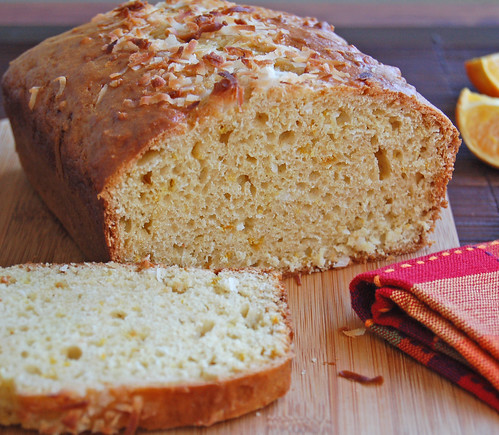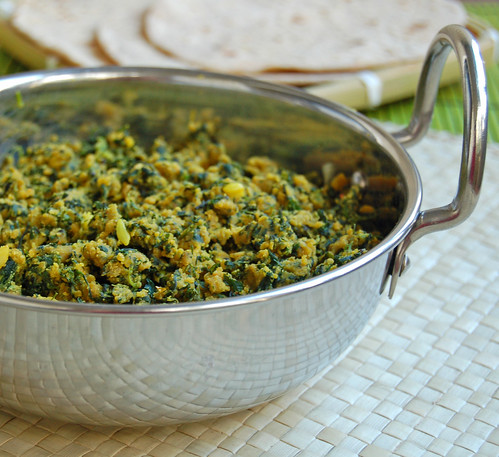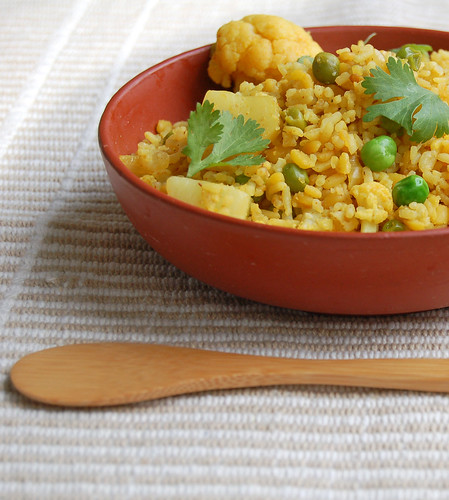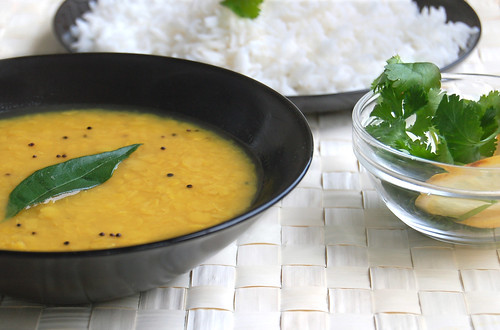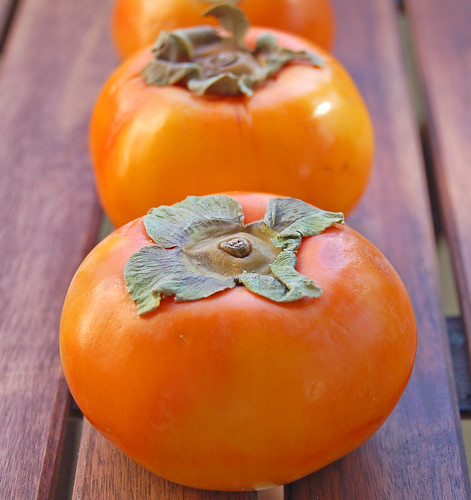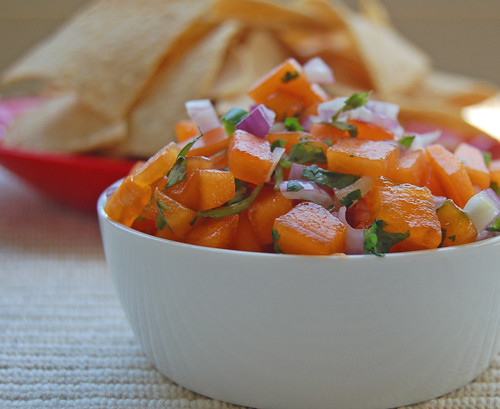Less is more - Orange Bread
This recipe for orange bread is from an issue of Cooking Light and has no butter. Yes you read that right - no butter. This absence is not substituted by a lot of oil; just 1 tablespoon.
Now one wouldn't necessarily tweak a recipe that sounds so good does it? But I couldn't resist myself. I used a mix of whole wheat flour and all purpose and reduced the sugar. Then I began to worry that I had experimented too much. I know, I am weird that way.
The bread still rose beautifully and tasted great, especially the crunchy coconut. Perfect for brunch, afternoon snack or whenever you wish to nibble on something sweet.
ORANGE QUICK BREAD
(makes one 9 x 5-inch loaf)
3/4 cup sugar
1 egg
1 tbsp canola oil
1/4 cup milk
1 (8 oz.) carton orange yogurt
1 1/2 cups all purpose flour
1/2 cup whole wheat flour
1/4 cup + 1 tbsp flaked, sweetened coconut
2 tsp grated orange rind
1 tsp baking soda
1/2 tsp salt
Preheat oven to 350°F. Grease loaf pan. Combine sugar, oil and egg in a bowl and whisk till smooth. Stir in yogurt and milk.
Lightly spoon flour into measuring cup and level with a knife (as opposed to scooping from container). Combine flour, coconut, orange rind, baking soda and salt. Make a well in the centre and add milk mixture.
Stir until just moist. Spoon batter into greased 9 x 5-inch loaf pan. Sprinkle 1 tablespoon of coconut on top. Bake at 350°F for 40-45 minutes or until tester inserted in the centre comes out clean.
Cool in pan for 10 minutes. Cut in slices and serve (it's divine warm and topped with a little orange marmalade :-))
* Original recipe calls for 1 cup sugar
* Using whole wheat flour will yield a denser bread
* Since I didn't find an 8oz. carton of orange yogurt I used 6oz. orange yogurt plus 2oz. vanilla yogurt
Entry for - WBB # 7/ Baking for Breakfast hosted by Nandita of Saffron Trail
Tags: quick bread low calorie baking orange coconut cake healthy breakfast butter less

